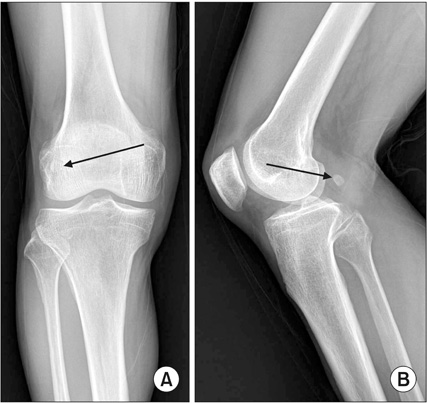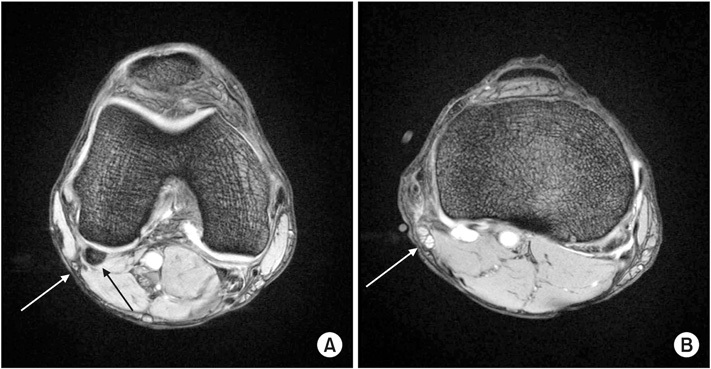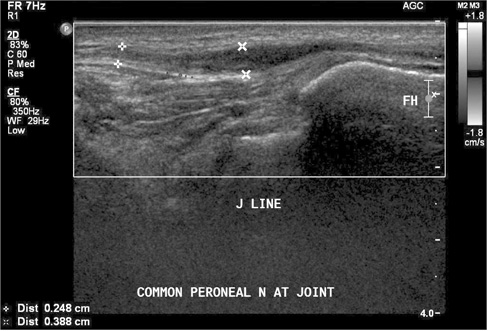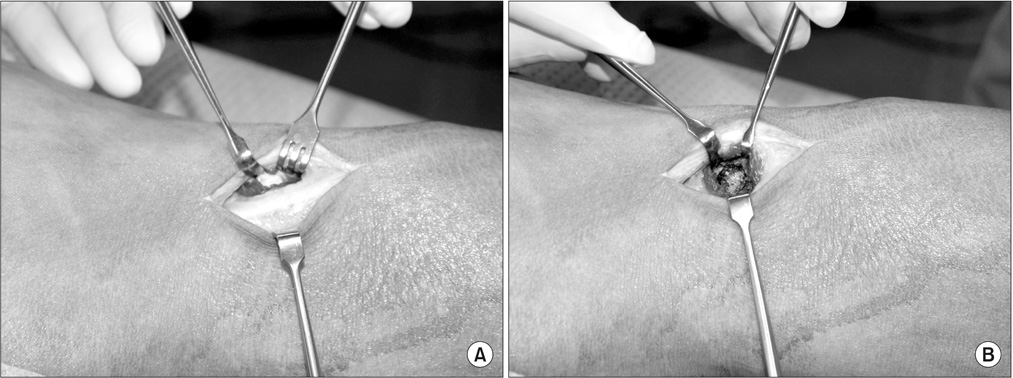J Korean Orthop Assoc.
2017 Oct;52(5):462-466. 10.4055/jkoa.2017.52.5.462.
Fabella Syndrome: A Rare Cause of Common Peroneal Nerve Palsy
- Affiliations
-
- 1Department of Orthopedic Surgery, Yeungnam University Medical Center, Yeungnam University College of Medicine, Daegu, Korea. karaz101@ynu.ac.kr
- KMID: 2393520
- DOI: http://doi.org/10.4055/jkoa.2017.52.5.462
Abstract
- The fabella has been considered to have a minor clinical significance. However, there have been a few reports describing the fabella as one of the causes of peroneal nerve palsy (PNP). This report describes a 66-year-old farmer who complained of acute neurologic symptoms involving the fabella. Surgical extirpation was performed and neurologic function was recovered dramatically. Recently, there have been no published reports on fabella syndrome with common PNP. Here, we report an unusual case of common PNP with the fabella as a cause.
Keyword
Figure
Reference
-
1. Kawashima T, Takeishi H, Yoshitomi S, Ito M, Sasaki H. Anatomical study of the fabella, fabellar complex and its clinical implications. Surg Radiol Anat. 2007; 29:611–616.
Article2. Zeng SX, Dong XL, Dang RS, et al. Anatomic study of fabella and its surrounding structures in a Chinese population. Surg Radiol Anat. 2012; 34:65–71.
Article3. Duncan W, Dahm DL. Clinical anatomy of the fabella. Clin Anat. 2003; 16:448–449.
Article4. Kojima R. Fabellae in Japanese, especially in the aged. Yokohama Med Bull. 1958; 9:339–347.5. Minowa T, Murakami G, Kura H, Suzuki D, Han SH, Yamashita T. Does the fabella contribute to the reinforcement of the posterolateral corner of the knee by inducing the development of associated ligaments? J Orthop Sci. 2004; 9:59–65.
Article6. Katirji MB, Wilbourn AJ. Common peroneal mononeuropathy: a clinical and electrophysiologic study of 116 lesions. Neurology. 1988; 38:1723–1728.
Article7. Wilbourn AJ. AAEE case report #12: common peroneal mononeuropathy at the fibular head. Muscle Nerve. 1986; 9:825–836.
Article8. Takebe K, Hirohata K. Peroneal nerve palsy due to fabella. Arch Orthop Trauma Surg. 1981; 99:91–95.
Article
- Full Text Links
- Actions
-
Cited
- CITED
-
- Close
- Share
- Similar articles
-
- Peroneal Nerve Palsy Induced by Impingement of the Screw in Tibial Component Subsidence -Case Report-
- A Case of Peroneal Nerve Palsy Secondary to Fibular Head Osteochondroma
- Common peroneal nerve palsy after robotic assisted laparoscopic colectomy: A case report
- Cauda Equina Syndrome and Common Peroneal Nerve Palsy after Spinal Anesthesia: A case report
- The Common Peroneal Nerve Injuries





